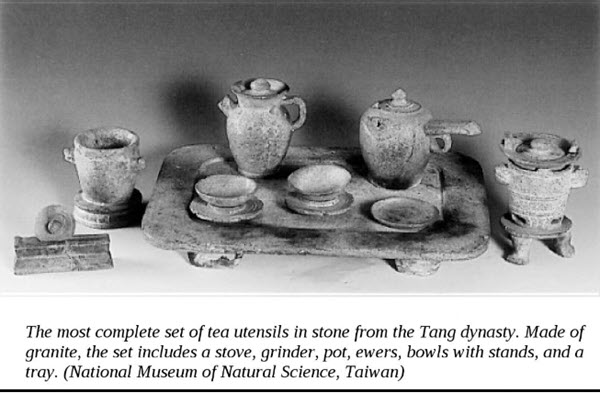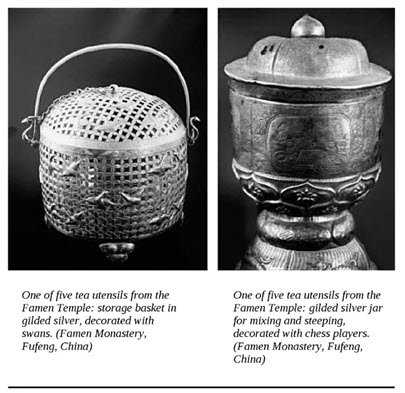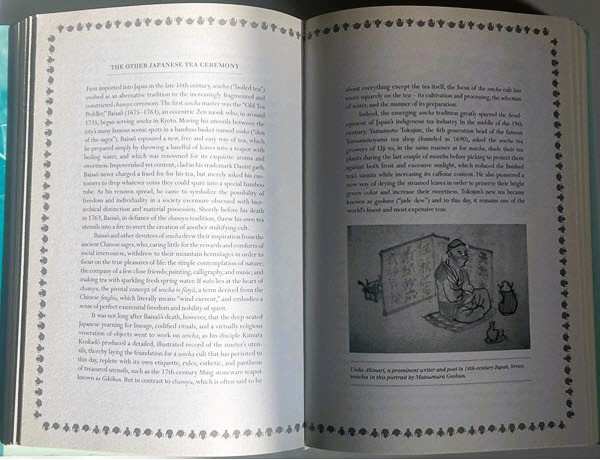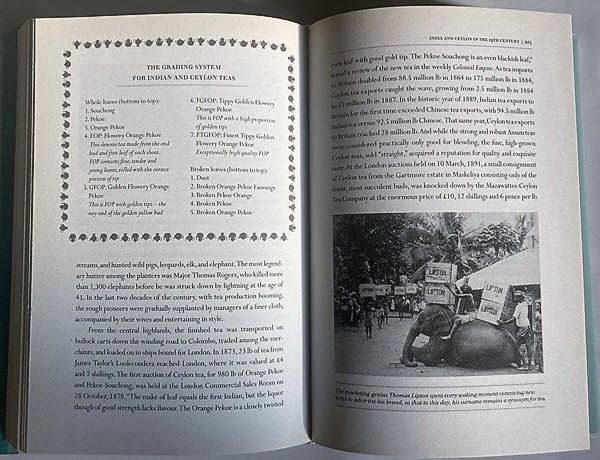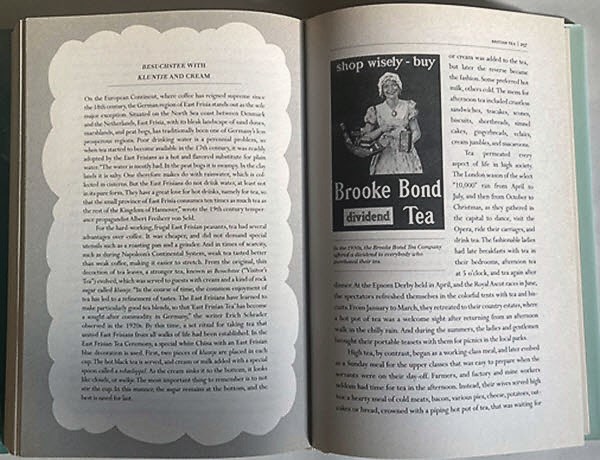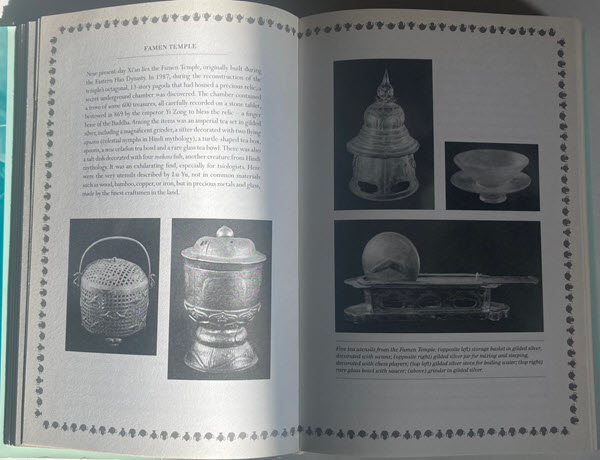“If there was one thing that this book did better than any other tea history book out there it was in presenting us with new areas of knowledge and different tellings of familiar stories in the great and long history of the plant, beverage, and customs of tea. From the Mongolian tribes to the Australian outback, we were taken to lands, explored customs, and followed the progress of the humble leaf in areas that are rarely otherwise explored. Somehow, the clearly extensive academic research behind this book has been cajoled into an engaging text that reads easily and leaves you wanting more, more, more.” – Kyle Whittington
Listen to the Review

A Definitive and Entertaining History of Tea
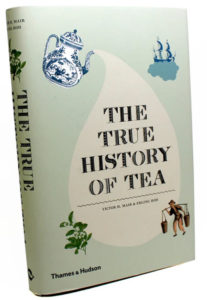
I thoroughly enjoyed reading this book, for it is one of those rare instances where, rather than the dry read that the title suggests, the reader is instead treated to an engaging and captivating page-turner. Somehow, the clearly extensive academic research behind this book has been cajoled into an engaging text that reads easily and leaves you wanting more, more, more.
It invites delving down rabbit holes to explore further the places and people packed into it. Having Google alongside to look things up whilst reading is one approach. Indeed, if there was one criticism felt by many, it was the lack of footnotes within the text. For the hardened tea readers, we wanted to know more. We wanted to know where we could go to find out more.
If there was one thing that this book did better than any other tea history book, it presented us with new areas of knowledge and different tellings of familiar stories in the great and long history of the plant, beverage, and customs of tea. From the Mongolian tribes to the Australian outback, we were taken to lands, explored customs, and followed the humble leaf’s progress in rarely explored areas. Take, for example, the chapter “We invented the samovar!” And “Conquering new lands” explored the Russian caravan tea trade and the Islamic world of tea, respectively. These areas are rarely touched upon in the wider pantheon of tea books, so exploring them like this was a treat.
In such a fast-paced yet in-depth global exploration of tea, the summaries at the end of each chapter helped to ground you in what you’d just absorbed. Little ‘mini studies’ are scattered throughout the book to give the veritable tea leaves (and our minds) time to unfurl and take it all in. These studies are defined by a border and span no more than two pages offering detail on a topic that sits alongside the body of the chapter.
Additionally, the book features three fascinating appendices, perhaps the most interesting of which is an exploration of the word tea—a must-read for linguists. The appendices themselves are thoroughly referenced, which leaves one wondering if perhaps the reason for the lack of references in the body of the book was to turn this phenomenal work of research into the readable page-turner that it is. In which case, job well done. Page turner it most surely was and a welcome addition to any tea lover’s bookshelf. This is a book to which I’m sure we shall all return from time to time to look up snippets of tea history.
TeaBookClub
TeaBookClub is an international group of tea lovers and readers who meet up virtually every month to discuss the tea books we read. My book reviews combine my thoughts and those of TeaBookClub members. Here’s what TeaBookClub members thought:
A literary style history that is very immersive. It was very comprehensive. – (Ravi, The Netherlands)
It added nuance to everything we’re told about tea, the stories we’re familiar with. It sheds a different light on them. – (Aimee, Canada)
I really, really enjoyed it. I thought it was a good mix of telling the broad scope of the story but with enough details that you got a feel for the place and the time. – (Kari, USA)
I really loved this book. I’m referencing and googling all the time. I find it very stimulating. Not flawless, but I’m happy to re-read it. An 8 out of 10. – Mariella
All these rabbit holes, I kept looking stuff up and reading more about the people and places. I thought it did a really good job with the subject, and the summaries at the end of the chapters helped to orientate you. – Kari
I read it with another screen open with Google maps and Wikipedia. I was looking up everything. I’m a linguist, so I was very excited to read Appendix C on the origins of the words for tea. It was well written. It added nuance to everything else we’ve been told about tea. – Aimee
A literary style history that is very immersive. It was very comprehensive but sometimes contradicts what I’ve read in other books, leaving me questioning what is true. – Ravi
It is great that they talk about other places as well. A full chapter on Russia. Mongolia, the Manchu’s. There’s the chapter on the “Islamic world of tea.” That’s great that it’s included with the other history we usually get. – Aimee
It was interesting to see tea talked about in the same context as ancient Daoist practices. It was cool to see that finally talked about in the same conversation. – Shawn
In Appendix C, there’s extensive use of footnotes, and it’s really good, but a few more would have been good. – Aimee
This book made an excellent attempt at a decolonized narrative. I really appreciated a lot of the literary references that were included. Especially from China. Poetic references or “records” of tea. – Anesce
Look Inside the Book
Buy the Book
The True History of Tea by Victor H. Mair and Erling Hoh
Thames & Hudson | $26.95 | 260 Pages
ISBN 978-0-500-25146-1
March 24, 2009 | Hardcover | 6.5 x 9.4 in
Goodreads | IndieBound | Barnes & Noble | Amazon
Author bios:
Victor H. Mair
Professor of Chinese Language and Literature at the University of Pennsylvania and the author of many books, including The True History of Tea and The Tarim Mummies.
Erling Hoh
A correspondent for Archaeology who has written on Chinese history and culture for Natural History and others.
